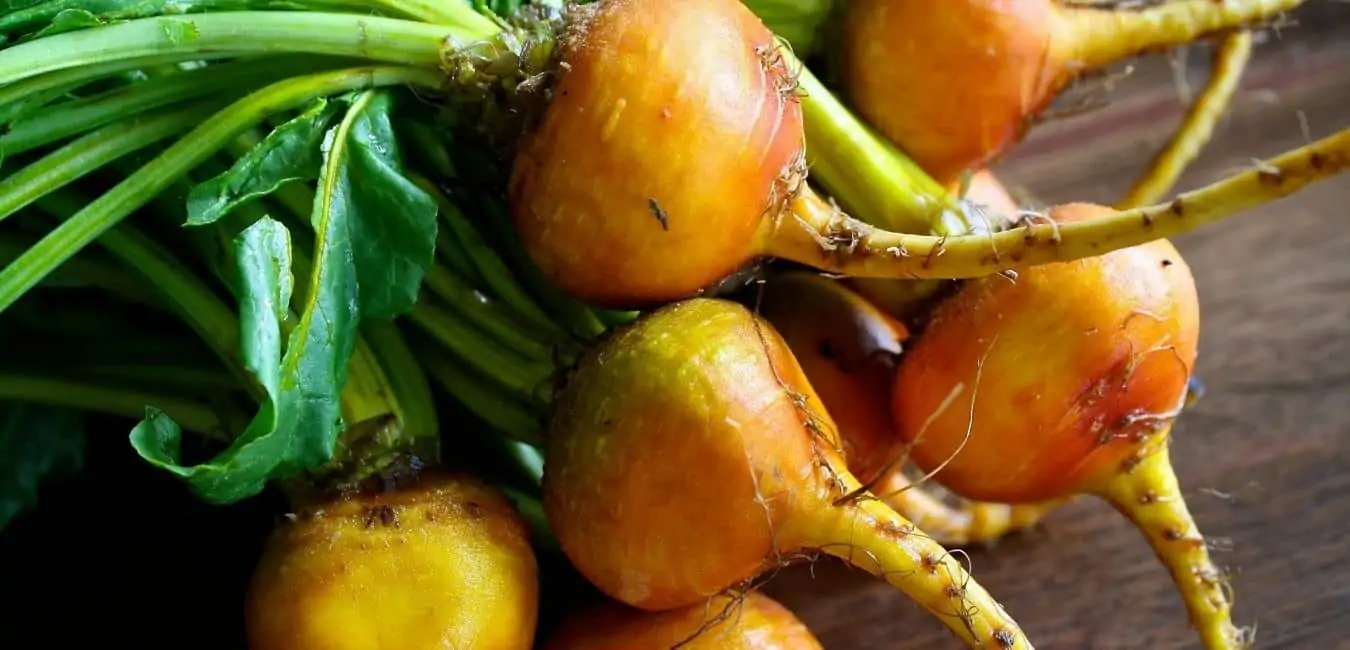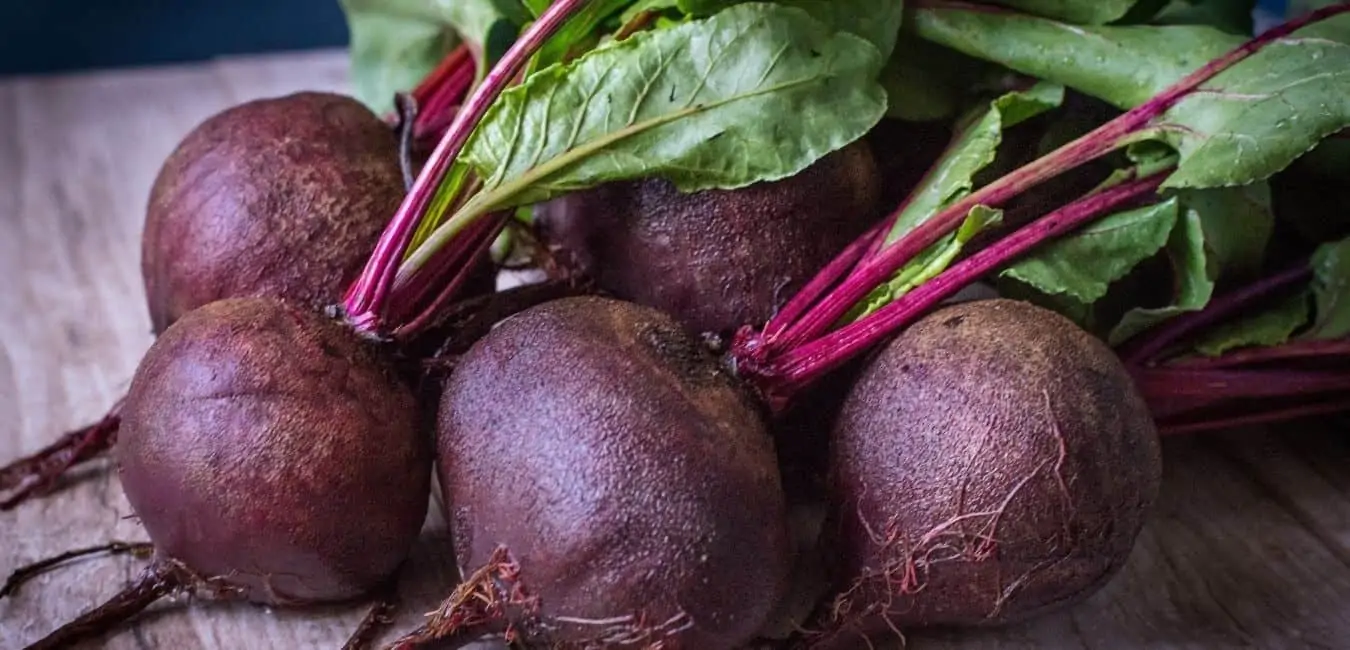Every vegetable gardener wants to grow Beets in his garden. Beets are one of the easiest vegetables to start gardening. That’s why many beginner gardeners start with Beetroot in their garden. Some of them succeed while others don’t. They usually ignore the basic requirement of the plant. Usually, they start gardening to get the max out of nowhere. Meanwhile, they do some common mistakes that cause inevitable failure. Therefore, Avoid these 9 Common mistakes with Beetroot Gardening.

Check out my previous post: Common Tuberose Pests and Diseases with Solution
Some Information about Beetroots
| Common name: | Beets or Beetroot, Table beet, garden beet, red beet, dinner beet, or golden Beet |
| Scientific Name: | Beta Vulgaris |
| Common Color Variants: | Red, Pink, Purple, Yellow, and White |
| Harvesting Time: | 55-65 days. You can harvest Beets within 2 months after germination. |
Read more about Vegetables that Start With A to Z- Beginners Guide
10 Common Beet Growing Mistakes to Avoid
These are 10 common mistakes with beetroot that every vegetable gardener must avoid. Most of us will think how can a gardener do such a silly mistake. You are right but trust me, they don’t think it’s wrong.

Check out the list and amend your decisions to avoid any mistakes with beetroot gardening.
- Wrong Seed Selection
- Early Plantation of Beets
- Transplanting Beetroot seedlings
- Planting Beets on Hot summer days
- Wrong Soil Composition
- Inadequate water supply
- Ignoring Weeds in Beet garden
- Ignoring Pest or disease symptoms
- Improper soil fertilization
- Too early or Late Harvesting
Wrong Seed Selection
Beets or Beetroot is an easy-to-grow vegetable. There are lots of beetroot varieties available in the market. Some have red or Purple roots while others are Yellow or white.
Some variety of Beets may require more water and sunlight than others. You can find Beetroot varieties developed for specific geographical areas. They are developed to survive certain climate and soil conditions.
Therefore, It is necessary to choose a variety compatible with your locality. Otherwise, You will lose both time and money without any Beetroot yield.
Once you select a variety of beetroot the next task is to get some seeds. Now, you can either buy the Beetroot seeds online from Amazon or any seed store.
In either case, you must make sure that the seeds are healthy and viable to grow. Every seed seller suggests an expiry date for the seeds. You should check out the labels for details before any purchase.
Early Plantation of Beets

Beetroot or Beets are cool-weather vegetables. We sow the seeds in early spring after the last frost. This is the time when many new gardeners do a common mistake. They ignore the soil temperature before sowing the beetroot seeds.
Early sowing will result in less germination. Ultimately, this will result in a lower harvest of beets.
It is important to wait for the soil temperature to rise above 55 Fahrenheit. It is the minimum required temperature for beets to grow.
Therefore Avoid early plantation of beets. Wait for the night temperature to increase up to the comfort range of the plant.
Transplanting Beetroot Seedlings
It is a common mistake with beetroot gardening. Generally, we are comfortable with developing seedlings indoors and then transplanting in outside.
Beetroot seedlings are not good for transplantation. It is a taproot vegetable. If the root is damaged then, No harvest can be done.
Therefore, Make sure you are comfortable with moving these delicate seedlings outside. Otherwise, direct sowing of beets is always recommended.
Planting Beets on Hot summer days
You should plant beetroot in cool temperatures. Late transplant or sowing will result in deformed root growth. This problem is common with gardeners who transplant beets from seedlings. They usually wait too long for proper temperature.
Meanwhile, the outdoor temperature rises above 70 degrees Fahrenheit, which is not good for Beetroot plants. The ideal time to sow or transplant beets outdoor is when the frost is over and the soil is cool. The temperature must range between 60-75 Fahrenheit for good Beetroot growth.
Avoid planting Beets on hot Summer days. The root will not grow properly and the harvest will waste.
Wrong Soil Composition
Beets require soft loamy or sandy nutrition-rich soil. The soil should be light and rich in organic matter. It should be loose and well-drained.
Hard soil, silt, or clay will stunt or slow the root growth. Clay soil has minimum air concentration to support gaseous exchange in the roots.
Any debris, Stone, or pebbles in the soil can also deform or stop the Beetroot formation. Therefore, clean and loosen the soil at least 6 inches deep.
The soil should be slightly acidic in nature. A beetroot plant needs soil with 6.8 Ph or lower. Organic compost can help in maintaining soil nutrition and proper ph levels.
Proper soil composition is required for healthy root formation in Beets. Therefore, Do some research on soil conditions before planting beets.
Inadequate water supply
Betts require soft and moist soil. 80% of raw Beet is water. Therefore a Beetroot plant requires proper irrigation. It cannot survive a dry spell for a couple of days.
The roots can break in the absence of moisture. It will dry or become fibrous to cook.
Beetroot requires a regular abundant supply of water. You should keep the soil moist throughout the growing period. But never overwater the Beetroot plants. The roots must not stay in damp soil for long. It can cause root rot.
Beet is a fast-growing root vegetable. Therefore beets require more water. Make a proper schedule for watering your beets. Avoid this mistake and get a bountiful harvest this season.
Ignoring Weeds in Beet garden
Now, this is a cardinal sin for every gardener. We gardeners must understand that weeds or grass will compete with the vegetable plants for food and water.
This can cause nutrition scarcity for the plants you are growing. Big trees and perennial plants can survive a certain level of food or water deficiency during growth season. But a vegetable with a short harvest season can be greatly affected.
Beets are fast-growing root vegetables. they require abundant water and nutrition during their 60 days growth period. If you ignore weed or grass around the beets. Then you may have nothing to save at the end of the season.
Weeds and grass have dense fibrous root system which is much stronger than beetroots. They will occupy the space and consume the water and nutrition provided for the Beets. ultimately the Beets will have stunted growth.
All of these can happen within a week. Therefore never ignore any weed or grass growth in your beet garden. Handpicking in the initial days will help in controlling weeds in the garden.
Ignoring Pest or disease symptoms
Ignoring pests or any disease symptoms in the beets can be disastrous for the whole garden. It is a very common mistake done by most new gardeners. These Mistakes with Beetroot gardening can cause heavy economical loss. Sometimes experienced vegetable gardeners also do this mistake.
Don’t ignore the problems. Look ou carefully if your beets have spots in the leaves. Any rotting or wrinkling is an indication of infection.
Sometimes increased ant movement can suggest the possibility of aphids or mealybugs in the Beetroot plants.
lookout carefully especially in the evening for caterpillars and grubs. They can digest your entire leafy garden in a couple of days. Ignoring once will cost forever.
Use preemptive remedies like soap oil solution or neem oil spray to avoid any pest attack. Remove any heavily infected beetroot plant. This is necessary to ensure others are safe for harvesting.
Improper soil fertilization
Now, this is a sin. Every vegetable gardener must know that the plant needs some nutrients. It is the basic requirement for every vegetable. If the soil doesn’t have enough nutrition the growth will slow down and eventually stop completely.
We have learned that beetroot is a fast-growing vegetable. And to grow quickly they require lots of nutrition. Therefore you must keep them feed throughout their growth period.
A proper schedule should be managed to fertilize the soil in time. Sowing Beetroot seeds in unfertilized soil is a very common problem. This can result in less germination and inferior plant growth.
Soil preparation is an important step before Beetroot plantation. You must add a 2-3 inch cover of organic compost in the topsoil before seed sowing.
Also, fertilize the soil with liquid NPK fertilizer at 10-day intervals. Don’t forget to mulch the soil with a thin layer of compost once every month.
Too early or Late Harvesting
The final mistake is an obvious one-Improper Harvesting. Every new vegetable finds it difficult to schedule the time for harvesting.
A Beetroot plant should be ready to harvest within 55-65 days of germination. Now this time can carry a lot with soil temperature and moisture.
If your garden is exposed to direct sun and receives regular watering. Then most probably your Betts will mature within 60 days. This means you can harvest beets in 2 months.
Similarly, if the temperature is cold or too hot then you may have to wait longer.
Early harvesters will get a smaller root size whereas late harvesters will get bigger, harder, and slightly bitter roots. Both this situation is not suitable for any vegetable gardener.
Therefore, maintain a date sheet from seeding till harvesting. In my experience, you must harvest your beets between 55-60 days of germination. Plants with green crunchy leaves are good to harvest. Yellow beet leaves indicate averaging. Leave the overaged old plant in the soil for Beetroot seed formation.
Also read: Why Are My Carrot Seeds Not Germinating?
Final Word
Stay active and keep an eye on these mistakes. Nobody does these intentionally. It is the efforts and course of garden management that lead to these mistakes. Observe and solve them before any harm can happen to your beetroot garden.
Write your opinion on Mistakes with Beetroot in the garden.
Keep Reading Keep Gardening!
